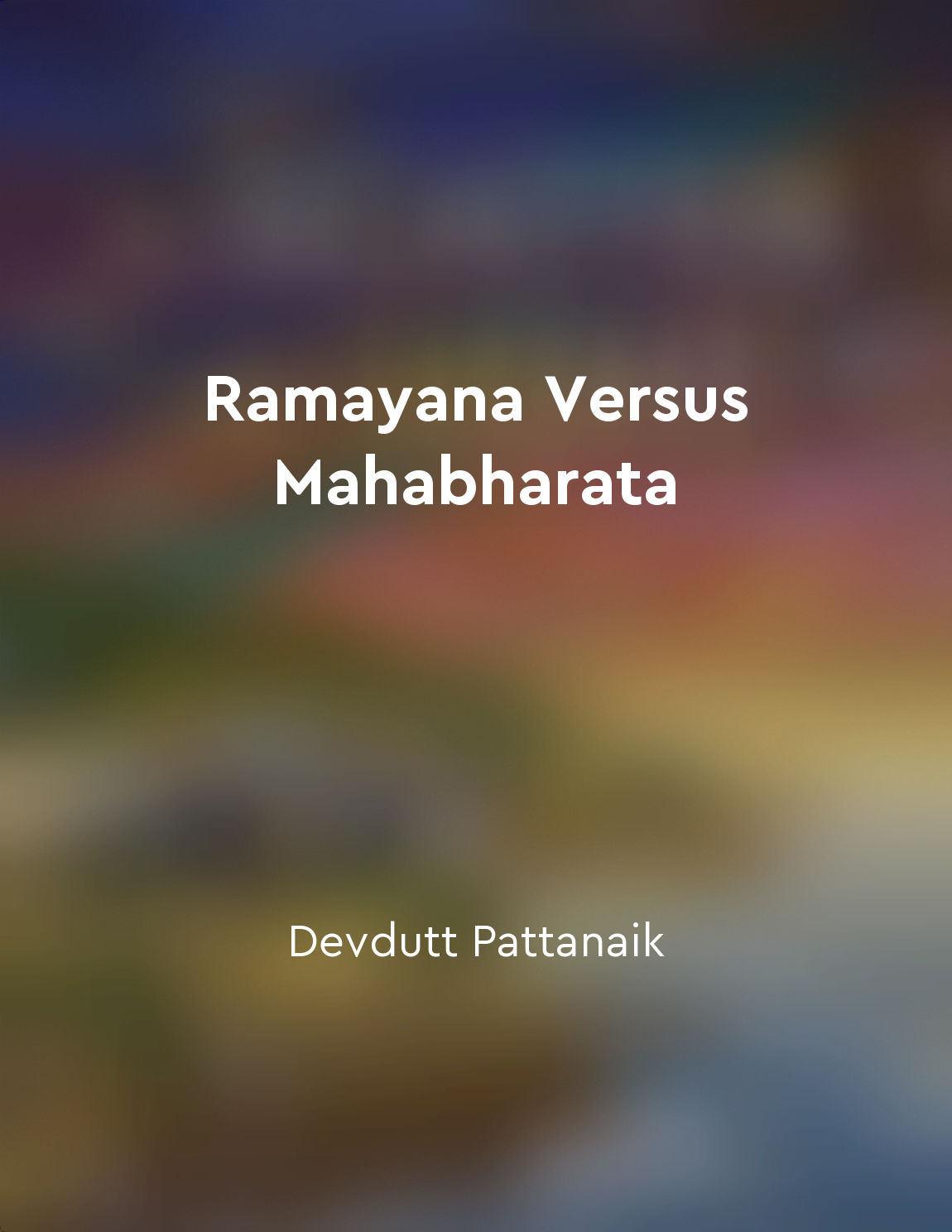Coronation from "summary" of Ramayan by P. R. Mitchell
In the great epic Ramayana, the concept of a coronation holds immense significance. It is a ceremonial event where a king is officially crowned and endowed with the responsibilities and powers that come with the title. This momentous occasion marks the beginning of a ruler's reign and symbolizes the transfer of authority from one generation to the next. During a coronation, the king is anointed with sacred oils and perfumes, signifying his divine right to rule. He is adorned with royal garments and jewels, enhancing his stature and presence as the chosen leader of his people. The ceremony is often conducted in the presence of other nobles, ministers, and citizens, who bear witness to the king's ascension to the throne. The coronation is not just a ceremonial ritual but a solemn vow taken by the king to uphold justice, protect his subjects, and govern with wisdom and compassion. It is a sacred duty that he must fulfill to ensure the prosperity and well-being of his kingdom. The coronation also serves as a unifying force, bringing together the people under a common leader and fostering a sense of loyalty and allegiance among them. In the Ramayana, the coronation of Lord Rama is a pivotal moment in the epic. After years of exile and trials, Rama is finally crowned as the rightful king of Ayodhya, succeeding his father King Dasharatha. The grandeur and solemnity of the coronation ceremony reflect the divine destiny of Rama and his unwavering commitment to righteousness and justice. Through the concept of coronation, the Ramayana conveys the importance of leadership, duty, and sacrifice. It emphasizes the virtues of a true king – humility, integrity, and selflessness – and underscores the sacred bond between a ruler and his subjects. The coronation is not just a symbol of power and authority but a solemn pledge to serve and protect the people with wisdom and compassion.Similar Posts

Ramayana's Ayodhya is peaceful, Mahabharata's Kurukshetra is battlefield
In the Ramayana, Ayodhya is portrayed as a peaceful kingdom where righteousness and order prevail. The city is described as a u...

Ramayana's Ayodhya Kanda is homecoming, Mahabharata's Shanti Parva is peace talks
The Ayodhya Kanda of the Ramayana is a section that focuses on the return of Rama to his kingdom after his exile. It is a homec...
Moral lessons
The ancient Indian epic Ramayan is not simply a story of heroism and divine intervention, but also a treasure trove of timeless...
Rama's obedience to father
In the ancient land of Ayodhya, there lived a noble king named Dasharatha, who had four valiant sons. The eldest of them was Ra...
Lord Hanuman
Lord Hanuman, the mighty monkey god, is a central figure in the epic tale of Ramayan. Known for his unwavering loyalty and devo...
Lakshmana's unwavering support
In the epic tale of Ramayana, the character of Lakshmana is portrayed as a devoted and loyal brother to Lord Rama. Throughout t...

Ramayana's Panchavati is exile, Mahabharata's Dvapara Yuga is era of war
In the Ramayana, Panchavati is the forest where Rama, Sita, and Lakshmana live during their exile. It is a place of peace and t...
The climax of the kandam unfolds in a dramatic battle
The intense conflict that marks the culmination of the Kishkindhā kāndam is a dramatic battle of epic proportions. The stage is...
Jatayu's sacrifice for Sita
In the great epic of Ramayana, the noble vulture Jatayu plays a crucial role in the story by sacrificing himself to protect Sit...
The great Kurukshetra war
The great Kurukshetra war was a pivotal event in the epic poem Mahabharat. The war was fought between the Pandavas and the Kaur...
